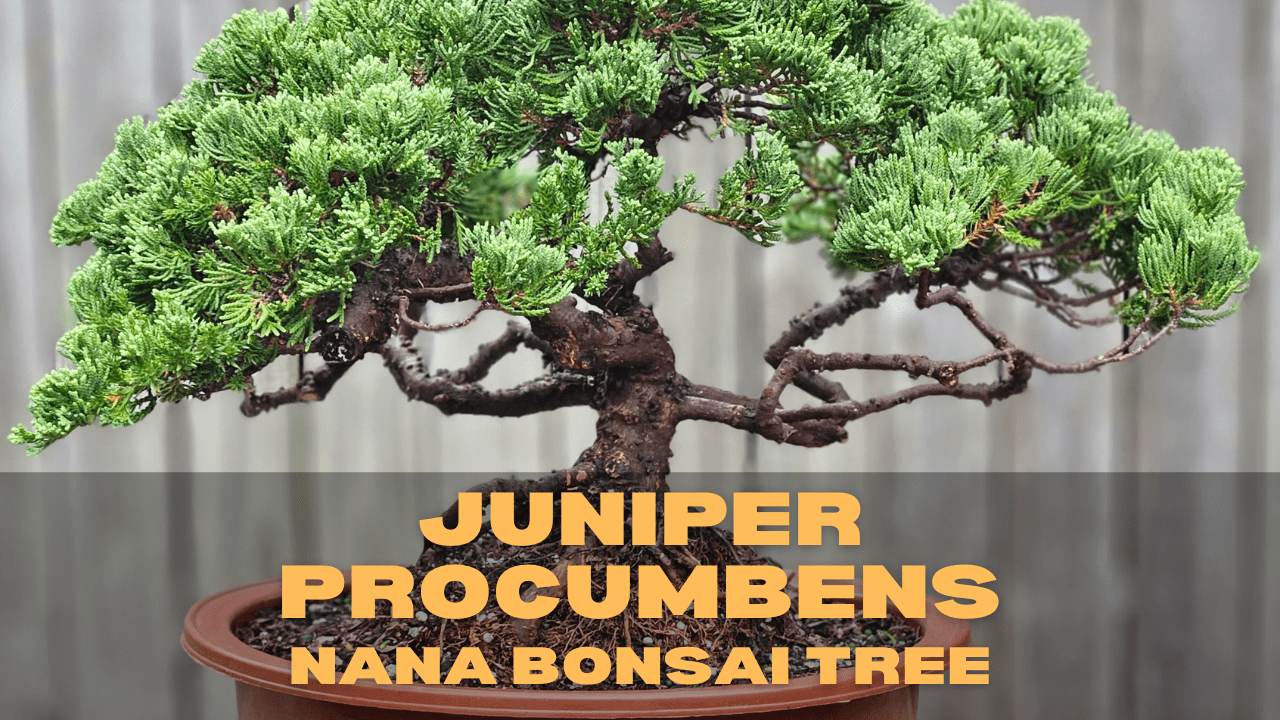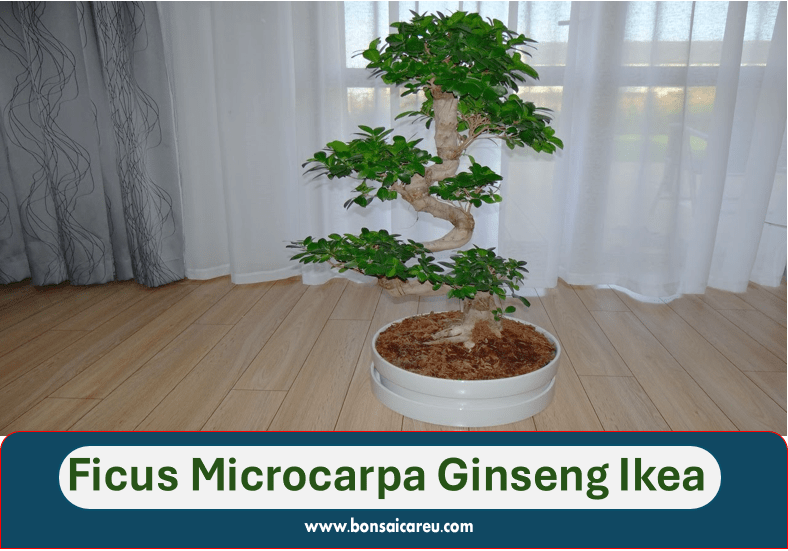Juniper Procumbens Nana Bonsai Tree is a small, evergreen conifer with a trailing habit. It is a popular choice for bonsai enthusiasts due to its compact size and attractive foliage.
This bonsai tree requires well-drained soil, plenty of sunlight, and regular pruning to maintain its shape. With proper care, the Juniper Procumbens Nana Bonsai can live for many years and bring a touch of natural beauty to any indoor or outdoor space.
Bonsai enthusiasts often gravitate toward the Juniper Procumbens Nana for its captivating appearance and manageable size. As an evergreen conifer, this bonsai tree offers year-round beauty and can thrive both indoors and outdoors. Its trailing habit and lush green foliage make it an appealing choice for those looking to add a touch of nature to their living spaces. With the right care and attention, this bonsai tree can become a cherished and long-lasting addition to any collection.

Juniper Procumbens Nana Bonsai Tree
Juniper Procumbens Nana, also known as the Green Mound Juniper, is a captivating bonsai tree that exudes timeless elegance and natural charm. This miniature evergreen, with its lush green foliage and gracefully contorted branches, captivates enthusiasts with its miniature beauty and tranquil presence.
Origins And Characteristics
Originating from Japan, the Juniper Procumbens Nana is a hardy and resilient bonsai tree that thrives in various climates. Its compact size, dense foliage, and striking trunk make it a popular choice for bonsai enthusiasts seeking a visually appealing and low-maintenance tree.
Symbolism And Aesthetic Appeal
Beyond its ornamental value, the Juniper Procumbens Nana embodies symbolism and aesthetic allure. In Japanese culture, this bonsai symbolizes longevity, strength, and the enduring beauty of nature. Its graceful silhouette and calming presence make it a cherished addition to any indoor or outdoor space, radiating a sense of harmony and tranquility.
Selecting Your Bonsai Specimen
Discover the beauty of the Juniper Procumbens Nana Bonsai Tree, a popular choice for beginners. Its elegant cascading branches and vibrant green foliage make it a stunning addition to any collection. When selecting your bonsai specimen, consider this variety’s unique charm and easy maintenance.
Selecting Your Bonsai Specimen Choosing the right Juniper Procumbens Nana Bonsai tree is crucial for its health and longevity. A healthy bonsai tree will not only be aesthetically pleasing, but it will also thrive in its environment. Here are some criteria for selecting a healthy bonsai specimen. Criteria for Choosing a Healthy Tree – Roots: Check the roots for any signs of rot, damage, or pests.
Healthy roots should be firm and light in color. – Trunk: Look for a straight and sturdy trunk with even bark. Avoid trees with scars or damage on the trunk. – Foliage: The foliage should be evenly distributed and vibrant in color. Avoid trees with yellow or brown leaves, as this may indicate a pest problem or disease. – Shape: Choose a tree with a shape that you find appealing.
Remember that the shape can be further developed through pruning and wiring. Understanding Different Forms and Styles There are several forms and styles of bonsai, each with its own unique characteristics. Here are some of the most common forms and styles of bonsai: – Formal Upright: A straight trunk that tapers as it goes up, with evenly spaced branches that gradually decrease in size. – Informal Upright: A more natural-looking tree with a curved trunk that still maintains a vertical orientation. – Cascade: A tree that cascades downward, often mimicking the appearance of a tree growing on a cliff. – Semi-Cascade: Similar to the cascade style, but the trunk does not extend past the base of the pot.
– Broom: A tree with a straight trunk and branches that radiate outwards, resembling the shape of a broom. – Windswept: A tree that appears to have been shaped by strong winds, with branches and foliage that are swept to one side. By understanding the different forms and styles of bonsai, you can choose a specimen that fits your personal preferences and desired aesthetic. In conclusion, selecting the right Juniper Procumbens Nana Bonsai tree is essential for its health and appearance. By following the criteria for choosing a healthy specimen and understanding different forms and styles of bonsai, you can find the perfect tree to cultivate into a beautiful work of art.
Juniper Bonsai Care
Essential Care Techniques
When caring for a Juniper Procumbens Nana Bonsai Tree, mastering essential care techniques is crucial.
Sunlight And Temperature Needs
Place the bonsai in a sunny spot, receiving at least 4-6 hours of direct sunlight daily.
- Avoid extreme heat; keep the temperature between 60-70°F.
- Protect from frost; maintain temperatures above 20°F.
Watering And Humidity Tips
Water the bonsai when the topsoil feels dry to the touch, ensuring the roots are moist.
- Use room temperature water; avoid chlorine or hard water.
- Mist the foliage regularly to maintain humidity levels.
Soil And Fertilization
Proper soil and fertilization are essential for the health and growth of a Juniper Procumbens Nana Bonsai Tree. In this section, we will discuss the ideal soil mix and the types of fertilizers to use, as well as the recommended schedules for fertilization.
The Ideal Soil Mix
Creating the right soil mix is crucial for the Juniper Procumbens Nana Bonsai Tree to thrive. This type of bonsai prefers well-draining soil that allows water to flow through easily, preventing waterlogged roots. The ideal soil mix for a Juniper Procumbens Nana Bonsai Tree consists of:
- 50% Akadama soil, which provides good drainage and moisture retention
- 25% pumice or perlite, which adds further drainage
- 25% lava rock or grit, which improves aeration
This combination of soil components ensures a balanced environment for the bonsai tree’s roots, allowing for proper water absorption and oxygen exchange.
Fertilizer Types And Schedules
Juniper Procumbens Nana Bonsai Trees benefit from regular fertilization to provide the necessary nutrients for healthy growth. When it comes to fertilizers, organic options are highly recommended, as they promote overall soil health and microbial activity. Here are some fertilizer types suitable for this bonsai tree:
| Fertilizer Type | Nutrient Content |
|---|---|
| Slow-release granular fertilizer | Provides continuous nutrient release over time |
| Liquid organic fertilizer | Quickly absorbed by the tree’s roots |
| Seaweed or fish emulsion | Rich in trace elements and promotes root development |
When it comes to fertilization schedules, it is recommended to apply fertilizer every four to six weeks during the growing season, from early spring to late summer. However, it is crucial to follow the specific instructions provided by the fertilizer manufacturer, as different products may have varying application rates and frequencies.
By providing the Juniper Procumbens Nana Bonsai Tree with the right soil mix and regular fertilization, you can ensure its vitality and beauty for years to come.
Pruning And Shaping Mastery
Pruning and shaping mastery are essential skills for cultivating a stunning Juniper Procumbens Nana Bonsai Tree. With the right techniques, you can enhance the tree’s natural beauty and create intricate designs that captivate the eye. In this section, we’ll delve into the art of pruning and shaping, exploring when and how to prune, as well as effective wiring strategies for achieving desired shapes.
When And How To Prune
Pruning should be done in early spring to maintain the tree’s desired shape and size. Use sharp, clean scissors to trim away any dead or overgrown branches carefully. Remove any branches growing in unwanted directions, ensuring a balanced and visually appealing silhouette.
Wiring Strategies For Desired Shapes
Wiring is a crucial technique for sculpting the Juniper Procumbens Nana Bonsai Tree into desired shapes. Carefully wrap aluminum or copper wire around the branches, gently guiding them into the desired position. Monitor the tree regularly to prevent the wire from cutting into the branches, adjusting or removing it as necessary to achieve the desired shape.
Overcoming Common Challenges
Successfully nurturing a Juniper Procumbens Nana Bonsai Tree involves overcoming common challenges with proper care and attention. Embracing challenges like root rot prevention and shaping techniques leads to a thriving and visually captivating bonsai specimen.
Pest And Disease Prevention
One of the common challenges faced when caring for a Juniper Procumbens Nana Bonsai Tree is the presence of pests and diseases. However, with proper prevention measures, you can keep your bonsai tree healthy and free from these issues.
Pests such as aphids, spider mites, and scale insects can infest your bonsai tree and cause damage if left untreated. To prevent these pests from taking over, regularly inspect your tree for any signs of infestation. If you spot any pests, you can manually remove them using a soft brush or spray them with a mild insecticide solution. Additionally, you can introduce beneficial insects like ladybugs or lacewings that feed on these pests.
In terms of diseases, Juniper Procumbens Nana Bonsai Trees are susceptible to fungal infections such as powdery mildew and root rot. To prevent these diseases, it is important to ensure proper air circulation around the tree and avoid overwatering. Additionally, make sure to use well-draining soil and sterilize your tools to prevent the spread of any potential pathogens.
Addressing Environmental Stress
Another challenge that bonsai tree owners may face is environmental stress. Juniper Procumbens Nana Bonsai Trees thrive in outdoor environments, but they can also be kept indoors with proper care. However, it is important to be aware of the specific environmental conditions that can cause stress to the tree.
One common cause of environmental stress is inadequate lighting. Bonsai trees require sufficient sunlight to thrive, so if you are keeping your Juniper Procumbens Nana Bonsai Tree indoors, place it near a bright window or use artificial grow lights to provide the necessary light. Additionally, avoid placing the tree near drafty areas or sources of heat, as extreme temperature fluctuations can also cause stress.
Another factor to consider is watering. Overwatering or underwatering can both lead to stress for your bonsai tree. It is important to find the right balance and water your tree consistently, taking into account factors such as the season and humidity levels. To determine when to water, you can check the moisture level of the soil using your finger or a moisture meter.
Frequently Asked Questions
How Do You Care For Juniperus Procumbens Nana?
To care for Juniperus procumbens Nana, provide well-drained soil, full sun exposure, and regular watering. Trim the foliage to maintain the desired shape and prune any dead or overgrown branches. Apply fertilizer in spring and avoid excessive watering to prevent root rot.
How Big Does Procumbens Nana Juniper Get?
The procumbens Nana juniper typically grows to a height of 1 to 2 feet.
Is Juniperus Procumbens Nana Sun Or Shade?
Juniperus procumbens Nana thrives in full sun to partial shade. It is adaptable to various light conditions, making it suitable for both sunny and shaded areas in your garden.
When To Prune Procumbens Nana Bonsai?
Prune your procumbens nana bonsai in early spring before new growth appears for best results.
What Is The Ideal Juniper Procumbens Nana Bonsai Care Routine?
To thrive, this bonsai needs ample sunlight, well-draining soil, and regular watering.
How Often Should I Water My Juniper Procumbens Nana Bonsai?
Water only when the topsoil feels dry, usually every few days.
Conclusion
The Juniper Procumbens Nana Bonsai Tree is a great option for those looking to add a touch of nature to their homes. With its unique appearance and easy maintenance, it’s no wonder why this tree has become a popular choice among bonsai enthusiasts.
Whether you’re a beginner or an experienced gardener, this tree can thrive in most environments and bring a sense of calmness to any space. So, if you’re looking for a low-maintenance plant that’s aesthetically pleasing, consider the Juniper Procumbens Nana Bonsai Tree for your next gardening project.


